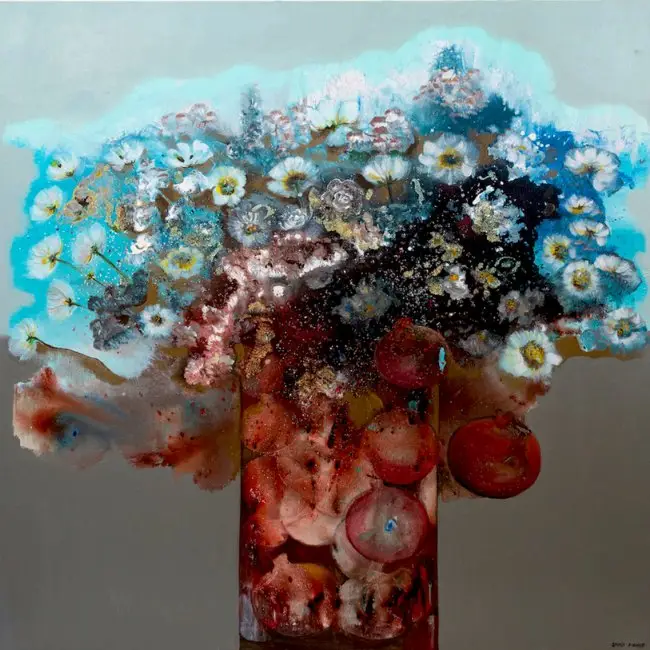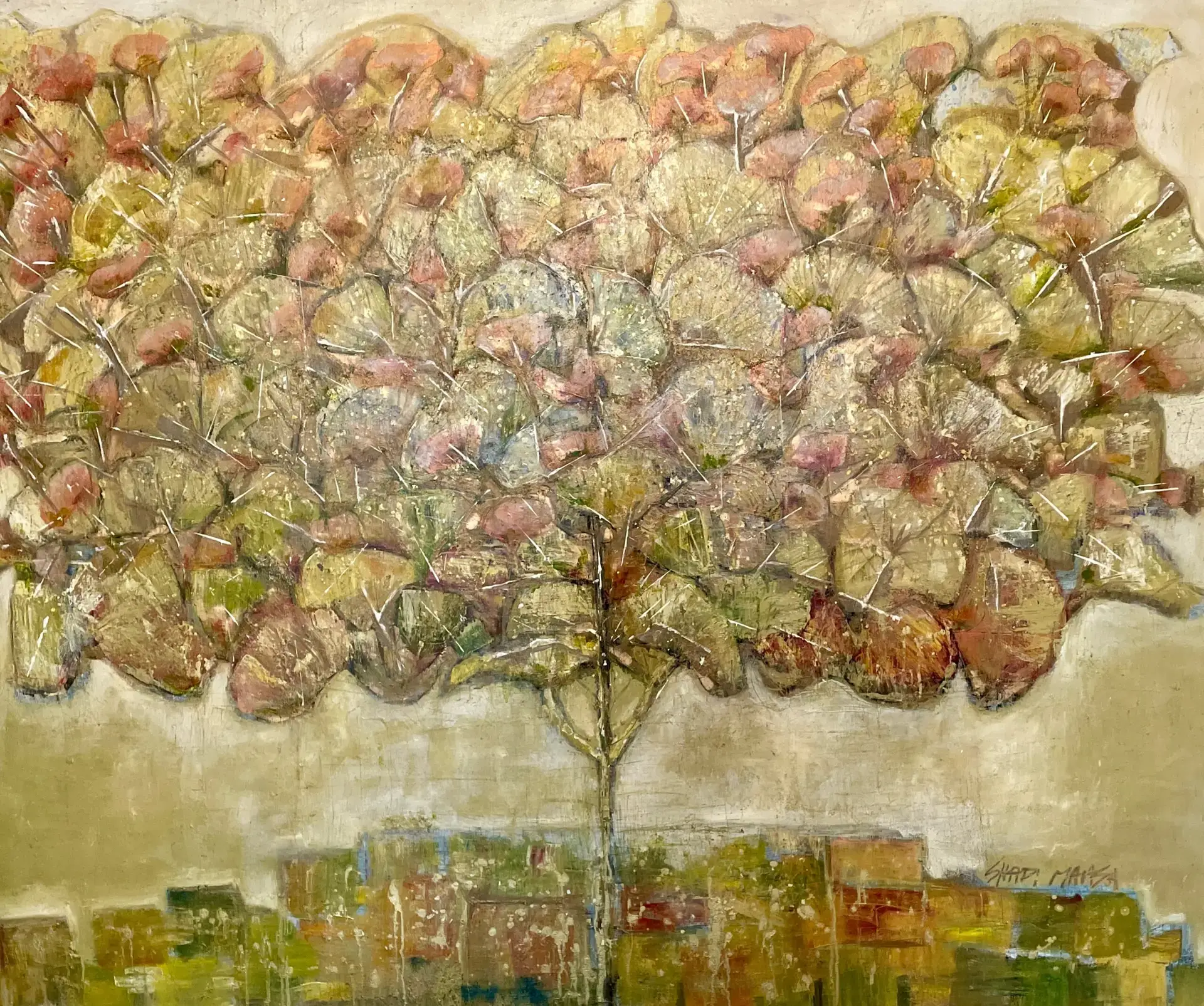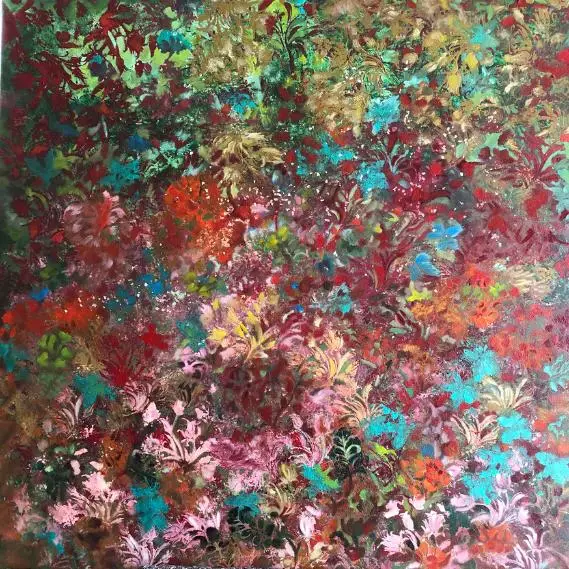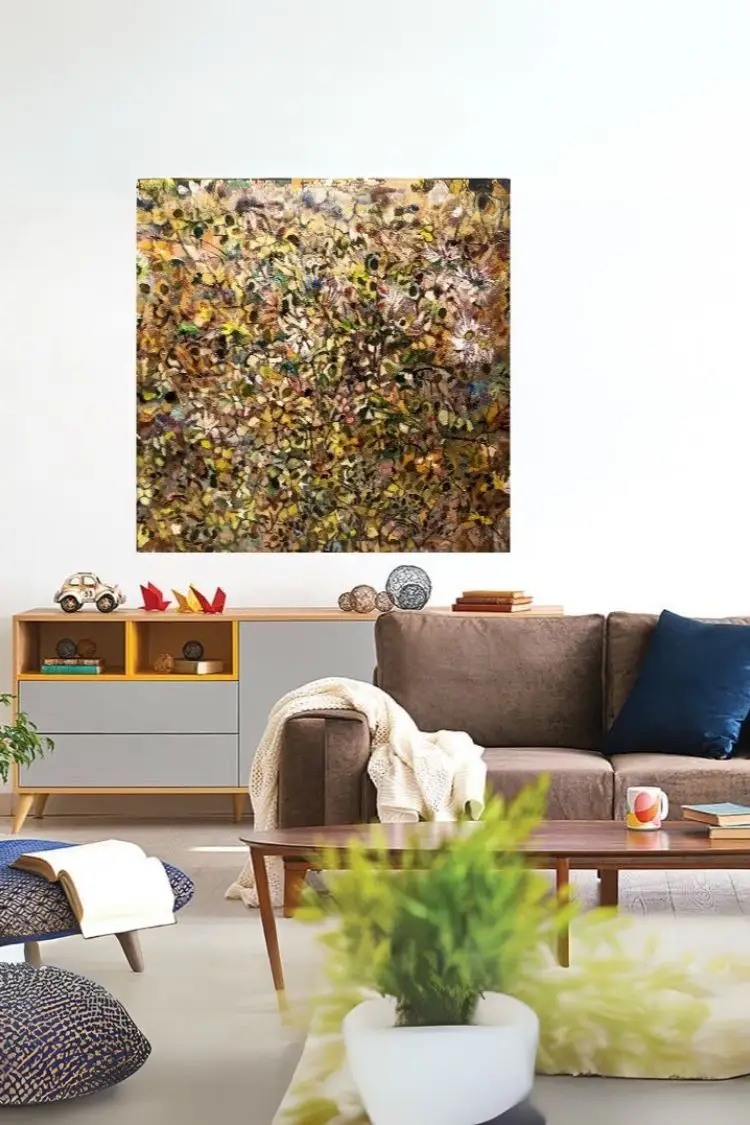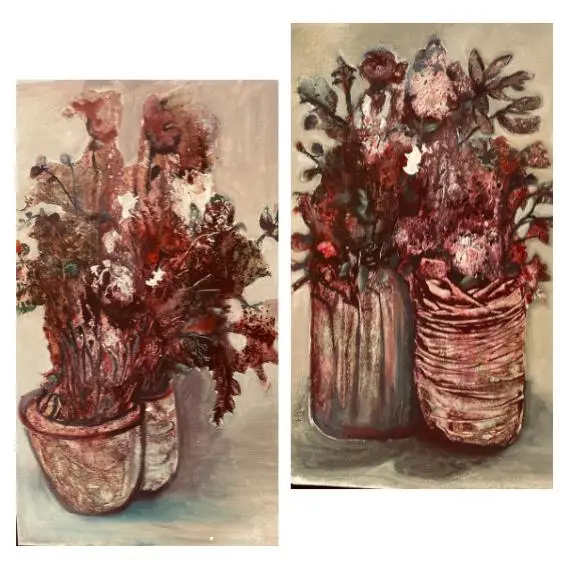
Abstract art is a form of expression that goes beyond literal representation. It communicates through colors, shapes, and textures, inviting viewers to connect with their emotions and thoughts on a deeper level.
This type of art encourages us to explore our inner selves and experience our feelings without any limitations. It offers a unique opportunity to engage in self-reflection and find solace in the beauty of abstraction.
In this article, we will delve into the relationship between abstract art and mindfulness. We will explore how these two concepts intersect and how abstract art can serve as a powerful tool for emotional exploration and meditation.
Abstract art exists in a realm where language dissolves. Its non-representational nature becomes both invitation and liberation, opening the door to abstract art interpretation as a deeply personal journey. Each brushstroke, curve, or burst of color refrains from dictating meaning, instead offering the viewer an open canvas onto which memories, moods, and subconscious yearnings may be projected.

Color reigns as emotional catalyst—fiery vermilions stirring passion, cool azures dissolving anxieties. Shapes, untethered from logic, pulse with the energy of dreams; spirals suggest endless possibility, jagged lines echo inner turmoil or excitement. Texture, whether thickly impastoed or whisper-soft in watercolor wash, awakens the senses and evokes tactile memory. Every element works in concert to amplify emotional expression without words.
“In abstraction I find freedom,” whispers the mind. “Here I may wander—here I may feel.”
This visual ambiguity invites introspection. As eyes trace shifting patterns and drifting forms, attention is gently anchored to the present moment—a meditative state where thought surrenders to sensation. Abstract art thus transforms itself into a sanctuary for subconscious exploration, leading viewers to encounter hidden facets of their psyche while cultivating mindfulness through attentive observation.
Moreover, engaging with abstract art can also be seen as a unique investment opportunity. Investing in abstract art allows one to delve into a world of colors and shapes that resonate with intellect and emotions beyond mere aesthetics.
Abstract art, with its limitless expression, serves as a medium for processing emotions—providing viewers a space where feelings can arise and settle without judgment. A silent conversation begins as the mind interacts with shapes free from specific meaning. Colors resonate with memories, textures evoke hidden desires or sadness, and through this quiet interaction, emotional equilibrium finds fertile ground.
Flow states often occur when we deeply focus on abstract pieces. As we gaze at the flowing patterns or vibrant contrasts, time seems to stretch and self-awareness fades away. We become fully present, entering a meditative state where our thoughts quiet down and our awareness sharpens.
Cognitive flexibility thrives in these encounters. Abstract shapes challenge us to change our viewpoints, interpret uncertainty, and approach ambiguity with curiosity instead of resistance. This mental agility builds resilience, preparing our minds to navigate both chaos and beauty.
The psychological interplay between artwork and viewer brings renewal and inner strength, transforming us gently with every experience.
Abstract art is a powerful tool used in art therapy. Its unique shapes and bright colors encourage viewers to explore their thoughts and feelings, leading to personal growth and emotional healing.
For individuals struggling with stress and anxiety, engaging with abstract art can provide a much-needed escape. The flowing forms and vibrant colors offer a calming sanctuary, allowing the mind to wander freely and temporarily release the burdens of everyday life.
Creating or observing abstract art can be a therapeutic way to express emotions. This creative process allows individuals to communicate their feelings through colors and brushstrokes, boosting self-esteem as they discover their artistic voice. It also provides an opportunity for catharsis, as they externalize their innermost emotions onto the canvas.
The inherent ambiguity of abstract art encourages mindfulness—a state of focused awareness on the present moment. By immersing themselves in the intricate patterns and textures of the artwork, viewers can cultivate relaxation and mental clarity. This meditative engagement with art aligns perfectly with mindfulness practices, promoting overall well-being.
The potential benefits of abstract art in therapy are vast, offering individuals a soothing space for self-exploration and healing.
Modern wall art and unique wall art are more than just decorations; they have become tools for practicing mindfulness in the comfort of our homes. Each piece serves as an invitation to pause, be still, and fully immerse ourselves in the present moment.
Modern wall art is characterized by its boldness—fearlessly combining different elements, playing with contrasts, and making use of empty spaces. On the other hand, unique wall art often showcases special details that make each piece one-of-a-kind, such as hand-painted textures, layered surfaces, or motifs that cannot be replicated. These qualities capture our attention and gently guide us back to the here and now.
Bright colors come alive on canvases like heartbeats, while intricate designs mirror the rhythms of our breath. Abstract wall art, in particular, offers a visual landscape where no specific narrative is imposed; viewers are free to get lost in fields of color or captivating patterns. In meditation corners or cozy nooks, such artworks become visual mantras—a place for our gaze to linger and our minds to relax.
The presence of unique wall art has the power to transform ordinary rooms into peaceful retreats for self-reflection. When carefully selected, a piece can radiate energy or calmness depending on its color scheme, uplifting moods from quiet introspection to gentle joy. This mindful décor goes beyond mere decoration; it shapes the atmosphere, encouraging self-care routines and nurturing personal well-being through the unspoken language of beauty.
“Within each brushstroke lies an invitation: pause, breathe, witness.”
The impact of these artworks prepares our souls for deeper explorations into self-awareness, curiosity, and emotional renewal. To further enhance your mindful spaces with powerful visuals, consider checking out how to choose the perfect large wall art for your home.
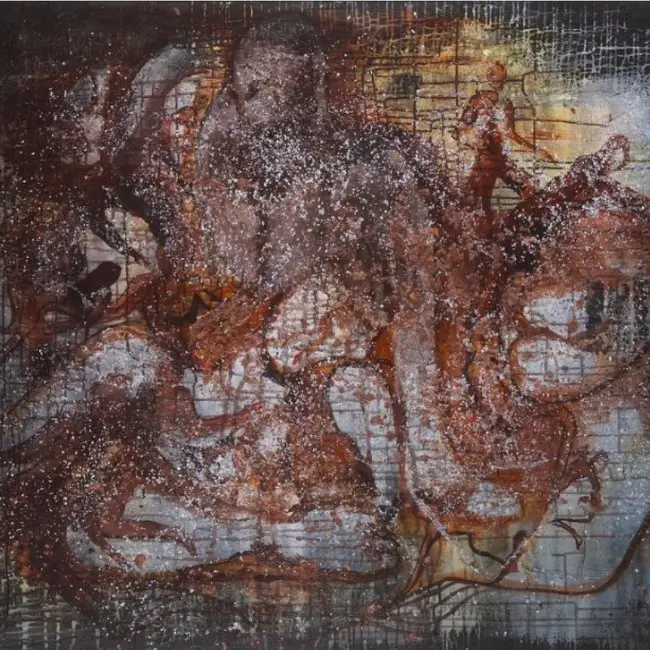
Shadi Mahsa’s journey begins in Tehran, where the ancient rhythms of Persian artistry shaped her creative spirit. With an MA in Fine Art from Chelsea University of Art in London and a portfolio gracing galleries from London to Sydney, her vision bridges continents and centuries. Each brushstroke is an homage to cultural memory—ornate Persian motifs interlace seamlessly with contemporary abstraction, forging a visual language that is both timeless and immediate.
Nature-inspired abstract art lies at the core of Mahsa’s practice. Her fascination with chaos theory breathes vitality into every canvas: fractals spiral, patterns echo, self-similarity teases the eye into deeper realms of perception. This scientific curiosity mingles with emotion, inviting viewers to lose themselves in the tangled geometry of nature—where order and disorder coexist in hypnotic harmony.
Patterns unfurl across her works like living landscapes—vivid bursts of turquoise, fiery ochres, and liquid golds swirl through intricate compositions. In pieces such as “Rize”, which symbolizes resilience and interconnectedness, or “Whispers of the Wild”, meditative presence is summoned by undulating lines and textural depth. Each painting becomes a portal: stillness and movement entwined, drawing the subconscious outward into wonderment and inward toward introspection. The result is art that resonates deeply—a quiet companion for mindfulness, contemplation, and emotional renewal.
For those interested in exploring more of Mahsa’s work, her collection includes a variety of pieces that celebrate contemporary abstract art, each featuring vibrant colors, intricate patterns, and evocative compositions that make a statement in any setting. You can discover more about her abstract paintings here.
Engaging deeply with abstract art requires a mindful approach, where viewers allow themselves to be fully present in the moment. Here are some techniques to enrich your experience:
Begin by observing the colors, shapes, and textures of the artwork. Let go of any preconceived notions or judgments. Allow your mind to wander freely and embrace whatever emotions or thoughts arise.
Use the artwork as a focal point during meditation or relaxation sessions. Choose pieces with vibrant colors and intricate patterns that invite deeper concentration. Let the details guide your focus, easing stress and promoting tranquility.
Connect emotionally with the art. Notice how different elements evoke feelings or memories. Reflect on why certain aspects resonate with you, fostering introspection and emotional healing.
By incorporating these mindful viewing techniques, abstract art can become a powerful tool for emotional engagement and meditative presence.
Creating a peaceful space starts with thoughtful decisions—every piece of art serves as a reminder to be present. Large wall art, particularly in oil or acrylic, can turn a room into a peaceful retreat. These powerful artworks capture attention, inviting viewers to explore their vibrant colors and intricate textures. The size of the artwork encourages relaxation and heightened awareness, filling even the simplest areas of your home with creative energy.
Here are some tips on how to use home décor to promote mindfulness:
A carefully selected artwork does more than decorate walls; it brings purpose to spaces, fostering both beauty and inner peace.
Experience abstract art not just as a decoration, but as a tool for emotions and meditation that encourages you to be present. Each brushstroke becomes a gateway, inviting enhanced creativity, tranquility, and a deeper understanding of yourself. Let modern and unique wall art lead you towards:
Allow the benefits of abstract art to flourish within you: stillness, awe, and an awakened sense of mindfulness.


